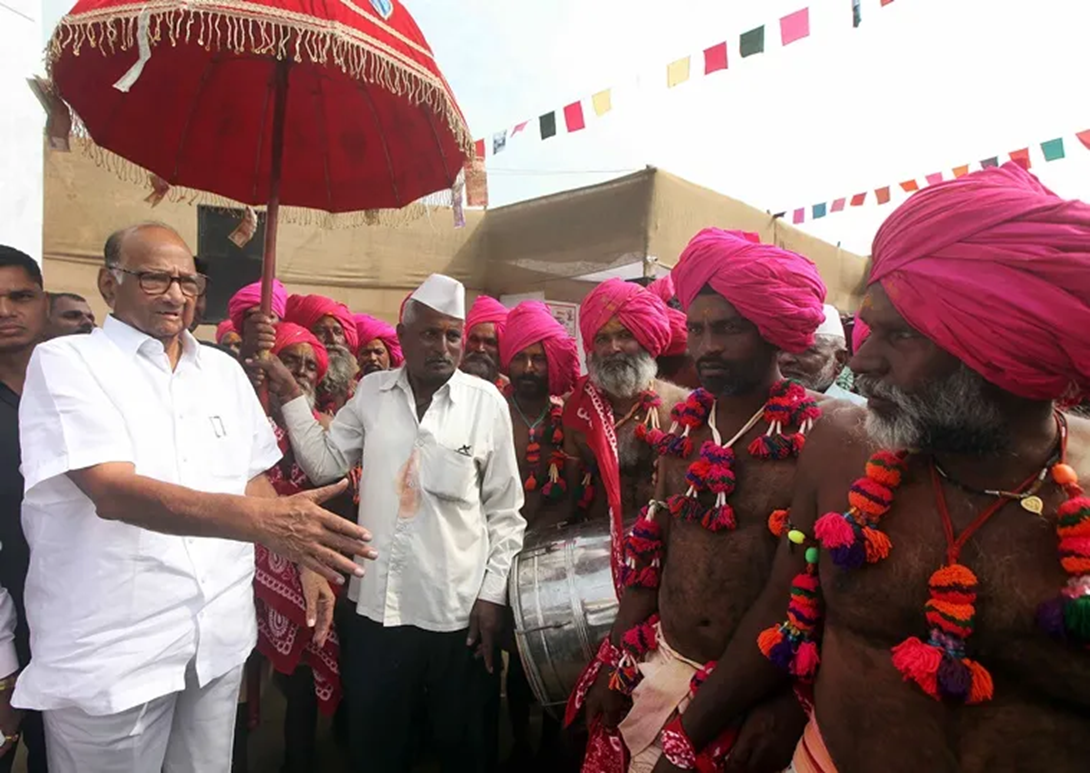- Courses
- GS Full Course 1 Year
- GS Full Course 2 Year
- GS Full Course 3 Year
- GS Full Course Till Selection
- Answer Alpha: Mains 2025 Mentorship
- MEP (Mains Enrichment Programme) Data, Facts
- Essay Target – 150+ Marks
- Online Program
- GS Recorded Course
- Polity
- Geography
- Economy
- Ancient, Medieval and Art & Culture AMAC
- Modern India, Post Independence & World History
- Environment
- Governance
- Science & Technology
- International Relations and Internal Security
- Disaster Management
- Ethics
- NCERT Current Affairs
- Indian Society and Social Issue
- NCERT- Science and Technology
- NCERT - Geography
- NCERT - Ancient History
- NCERT- World History
- NCERT Modern History
- CSAT
- 5 LAYERED ARJUNA Mentorship
- Public Administration Optional
- ABOUT US
- OUR TOPPERS
- TEST SERIES
- FREE STUDY MATERIAL
- VIDEOS
- CONTACT US
Why Are Dhangars Asking for ‘Grazing Corridors’ in Forests?
Why Are Dhangars Asking for ‘Grazing Corridors’ in Forests?
21-08-2024

Recent Protests:
A large group of Dhangars recently marched to the office of the sub divisional officer in Khamgaon, Buldhana district, Maharashtra, demanding the establishment of “grazing corridors” for their sheep and goats.
Who are the Dhangars?
- Background: The Dhangars are a community of shepherds with populations in Maharashtra, Gujarat, Karnataka, and Andhra Pradesh. They are also known as Golla and Kuruba in other regions.
- Current Status: In Maharashtra, the Dhangars are listed as Vimukta Jati and Nomadic Tribes (VJNT). They have been seeking Scheduled Tribe (ST) status for decades. The community is recognized as “Dhangad” in other parts of India, where they receive ST benefits.
Livelihood and Culture:
- Traditional Practices: The Dhangars have historically herded their animals along specific routes. However, as forests have been designated as protected areas, their traditional grazing routes are increasingly viewed as encroachments.
- Economic and Cultural Importance: These routes are important for their livelihoods and cultural heritage. They travel extensively, following the rains and moving between different regions such as Vidarbha, Western Maharashtra, and Konkan.
Grazing Corridors:
- Demand for Corridors: The Dhangars are requesting "grazing corridors" to officially recognize their right to graze livestock along their traditional paths.
- Environmental Impact: According to Sourabh Hatkar, leader of the Mendhpal Putra Army, grazing by sheep and goats does not harm the forest. In fact, their grazing can benefit the land. The community argues that their long history of coexistence with forests should be acknowledged and preserved.
Caste and Legal Issues:
- ST Status: The Dhangars' request for grazing rights is tied to their demand for ST status. This has faced opposition from other ST groups in Maharashtra, who worry that adding more people to the ST category could dilute their benefits.
- Forest Rights Act, 2006: This law supports traditional occupations, including grazing, but it primarily benefits ST communities. As nomadic tribes, the Dhangars have not gained similar benefits.
Community Profile:
- Population: The exact number of Dhangars is unclear, but estimates suggest they are around 10 million, or about 9% of Maharashtra's population. Around 40% of them rely solely on herding.
- Challenges: The nomadic lifestyle affects their access to education and healthcare. Despite these challenges, the community remains culturally rich and resilient.
Political Aspects:
- Political Influence: The Dhangars have a notable presence in Western Maharashtra and parts of Vidarbha. They can influence election outcomes in several Lok Sabha and Assembly seats.
- Political Support: Prominent figures like Mahadev Jankar and Gopichand Padalkar are active in state politics. Jankar’s party is part of the ruling Mahayuti, and Padalkar is a BJP MLC. Historically, the community has supported political parties that promised to address their concerns.
- Current Situation: Despite past political promises, the Dhangars have not voted as a united bloc recently. Hatkar hopes that with upcoming elections, their demand for grazing corridors will gain political traction.
Conclusion:
The Dhangars' push for grazing corridors reflects their deep-rooted connection to traditional herding routes and their struggle to adapt to modern forest conservation policies. Their demands highlight broader issues related to the rights of nomadic communities and the impact of environmental regulations on their traditional practices. As climate change and conservation efforts reshape land use, finding a balance that respects both ecological and cultural needs will be crucial for the Dhangar community and similar groups.
Must Check: Best IAS Coaching In Delhi
UPSC Prelims Result 2024 Out: Expected Cut Off & Other Details, UPSC Prelims 2024 Answer with Explanation, Daily Prelims Quiz, Daily Current Affairs, MONTHLY CURRENT AFFAIRS TOTAL (CAT) MAGAZINE, Best IAS Coaching Institute in Karol Bagh, Best IAS Coaching Institute in Delhi, Daily Mains Question Answer Practice, ENSURE IAS UPSC Toppers, UPSC Toppers Marksheet, Previous Year Interview Questions, UPSC Syllabus




